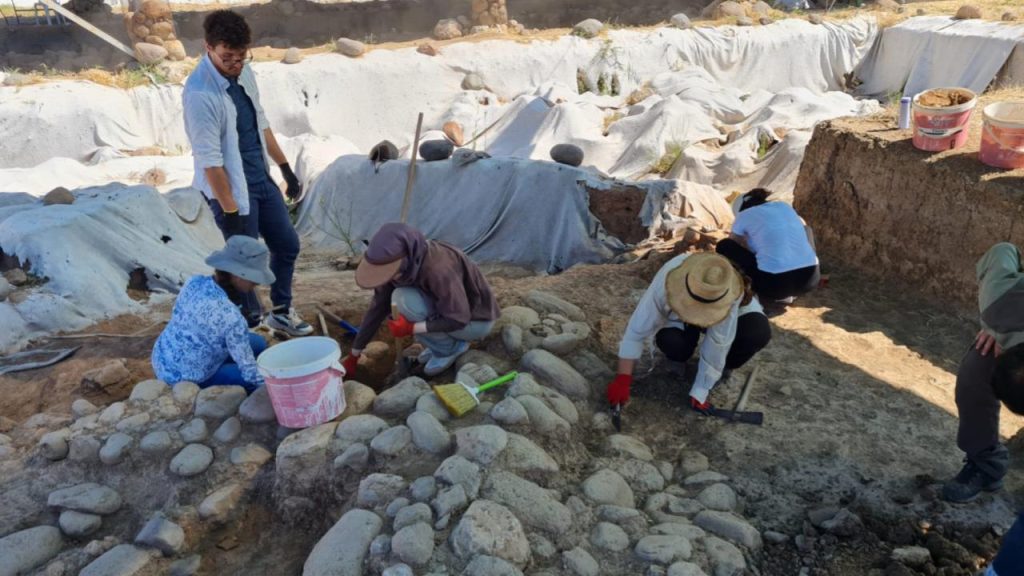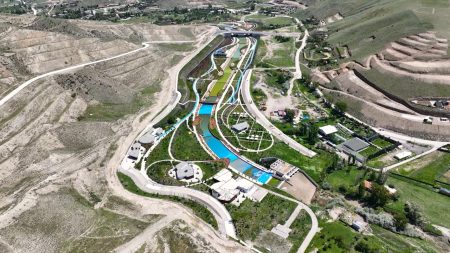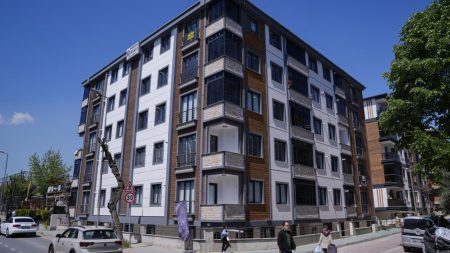Excavations at the Yassıtepe Mound, supported by the Ministry of Culture and Tourism, İzmir Metropolitan Municipality, and Bornova Municipality, have led to the discovery of a 5,000-year-old structure. Overseeing the excavation work is Associate Professor Zafer Derin from the Department of Archaeology at Ege University Faculty of Literature, who stated that ongoing studies are focused on determining how daily life and commercial activities were conducted at the site.
Dr. Zafer Derin mentioned that they found a storage room during the excavations, containing large jars and containers. He further explained, “We know that during that time, mussels were stored in this structure. Additionally, we have identified products such as grapes and figs mainly in the large jars and pottery. This not only proves the act of storage but also indicates the beginning of trade. Yassıtepe Mound is one of the best-preserved centers in Western Anatolia and holds significant importance for tourism. Our goal is to obtain new information about the stored products through further analysis.”
The discovery of the 5,000-year-old structure at the Yassıtepe Mound is a significant development in understanding the historical and cultural aspects of the region. The presence of a storage room filled with various products like mussels, grapes, and figs sheds light on the trading practices and daily life of the ancient inhabitants. The ongoing excavation work, supported by the Ministry of Culture and Tourism as well as local municipalities, aims to uncover further details about the commercial activities and lifestyle patterns of the past.
The identification of a storage area with jars and containers storing mussels, grapes, and figs provides valuable insights into the early trade practices and agricultural activities at the Yassıtepe Mound. As one of the best-preserved sites in Western Anatolia, the mound holds potential for enriching the understanding of ancient civilizations in the region. The discovery signifies the cultural and historical significance of the area and highlights the importance of preserving and studying such archaeological sites for future generations.
According to Dr. Zafer Derin, the discovery of the structure at Yassıtepe Mound not only confirms the existence of trade activities but also showcases the significance of the site for tourism. The findings of the excavations offer a glimpse into the trading practices and agricultural products of the ancient period, indicating a thriving commercial hub in the region. Through detailed analysis and further research, the team aims to gather more insights into the stored products and enhance our knowledge of the economic activities in ancient Western Anatolia.
In conclusion, the 5,000-year-old structure uncovered at the Yassıtepe Mound highlights the rich cultural heritage and historical depth of the region. The presence of a storage room storing various agricultural products indicates the development of trade and commerce in the area during ancient times. With ongoing excavation work and support from the Ministry of Culture and Tourism, the site is poised to reveal more secrets about the past, offering valuable insights into the early civilizations that thrived in Western Anatolia. The discovery underscores the importance of archaeological research in uncovering the mysteries of the past and preserving the cultural heritage for future generations.















